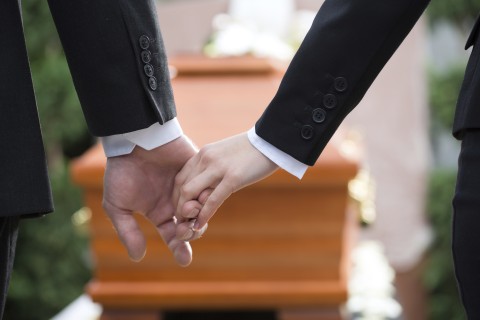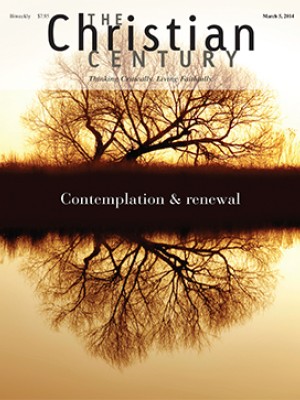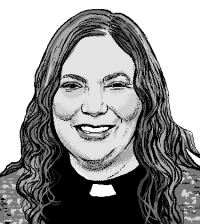Companion to strangers: Building bonds in sorrow and love

We read about the demise of church. Numbers are down. Church buildings are disintegrating or in closure. Metaphors are grim. The church as ship carrying us through the stormy seas has become the church as Titanic. Of course, we are people of resurrection. New forms are emerging like green shoots from dead stumps, and others shimmer on a horizon I find myself squinting at and unable to see clearly. In the meantime, I follow the shape of the church before my eyes. What I see does not discourage me in the least.
A year ago I received a Facebook message from a colleague on the other side of the country. He wrote from Los Angeles to tell me about a young woman he knew who was living in Brooklyn with her husband and two young sons. The family had not yet connected to an East Coast church community but had reached out to my colleague from the shadowlands of trauma. Although they lived in Brooklyn, this husband and wife were spending almost all their time in the pediatric intensive care unit of a Manhattan hospital where their 15-month-old son was dying.
Read our latest issue or browse back issues.
I was in another hospital bed when the message came. I had just emerged from surgery with a new hip. It would take a few weeks before I was able to venture out, but my seminary intern was fit for the task even if she would have described herself as limping toward that intensive care unit, halting and unsteady before the door. Her ministry was all the better for that.
Pastorally, she limped and stumbled with them on that ground where no one can go with steady feet. She took the time needed—waiting, praying, weeping, listening, sitting. She was young and inexperienced for the task, but really, how does experience make such a journey easier? We often say that young people—and children—are the future of the church as if their powerful ministry is not happening here and now.
She helped Charlie, the five-year-old big brother, say good-bye. She stayed beside his parents as they hung on the edge of impossible decisions. I was steady enough to attend the funeral. There was Charlie, serious, sad, and clinging to his mother. His baby brother was there too, laughing from the huge photos prepared by coworkers in his father’s design company, who did what they knew how to do.
My intern preached, and I led prayers around a small white coffin that was tenderly covered with favorite stuffed animals. Afterward I was ready to help the family find a church home closer to where they lived, but they stayed with us. We shared a bond, tethered by sorrow and love from one side of the country, one side of the river, to another.
Many Sundays Charlie hid behind his parents’ legs. He rarely spoke. He didn’t want to go to Sunday school but sat with his dad and drew pictures of cars and rockets like the one illustrating a prayer in the funeral bulletin. It was the prayer he’d spoken four days before his brother’s death. “Dear God, please send us a rocket ship so Jakey and me can go to the stars. I love Jakey. Amen.” Eventually, Charlie decided to go to Sunday school with his father sitting nearby.
One Sunday the Sunday school teacher prepared a lesson on Tabitha. She told the story of Peter raising Tabitha and also of how, after her death, the widows that Tabitha had clothed held her presence close through the fabric of her woven tunics. The teacher suddenly panicked. Wouldn’t Charlie wonder why Jesus did not bring his brother back to life? Why hadn’t God answered his prayers and those of his parents?
And then this quiet little boy, for the first time ever in class, began to speak. He told the class of preschoolers to second graders that his brother had died and that Jesus had raised his brother too and that his brother was with Jesus in heaven and that his brother was also still with him. He showed the class a woven bracelet that reminded him of his brother, just as the widows must have shown Peter their woven tunics.
The class, which includes children on medication for ADHD who get a break from their meds on weekends, sat perfectly still. Every eye and every ear was focused on the testimony of their Sunday school classmate who had walked in the valley of the shadow of death and was speaking about it.
There is a little girl in the class born with drugs in her veins, raised by her grandmother while her mother goes in and out of treatment. Her name is Heaven. Heaven spontaneously got up and went over and gave her classmate a hug. Following her example, every child in the class got up and, one by one, hugged their little brother in Christ—and his father.
Should I mention that Charlie is pale and blond and that Heaven is black and beautiful? Should I mention that class and privilege released their inexorably divisive hold on these children if only for a moment? I think I should.
After everyone sat back down, they wove paper placements for a Thanksgiving dinner that would be shared by hundreds the following Thursday—brightly colored paper woven in and out to grace the tables where the hungry gather to eat, luminous weavings tying us to one another. Heaven’s grandmother brought the three children to that meal. The first things that Heaven noticed were the placemats, which she proudly pointed out.
Her grandmother told me this at our Wednesday morning prayer group. She was the first one there, and before she even sat down, I saw that tears were flowing and I ran to get the box of tissues. Note to self: remember tissues along with candles for set up. She needs surgery for gallstones and was worried about the children. Can she trust her daughter to get them to and from school? She told me about another daughter born with full-blown AIDS in the 1980s. Experimental AZT gave her two years instead of the predicted six months, but she died in December and the anniversary is coming up.
Then others arrived. Before we pray, we read a text for the upcoming Sunday. A shoot shall come out from the stump of Jesse . . . The Spirit of the Lord shall rest on him, the spirit of wisdom and understanding, the spirit of counsel and might . . . “That sounds familiar!” said the grandmother. It should—I spoke those words when Heaven and her little brothers were baptized and I placed my hands on each of their promise-drenched heads.
I’m writing this to the accompaniment of banging from our boiler room. Chimney sweeps are breaking into the side of an underground chimney that has not been cleaned in a century. Suddenly it needs to be done or the youth who sleep in our shelter and my family, which sleeps in the parsonage, may slumber into carbon monoxide–induced oblivion. I am not naive about aging infrastructures. I worry about how we will pay our bills and what’s going to fall apart next. Nonetheless . . . this is the shape of the church as I see it—and from this vantage point, I like what I see.




